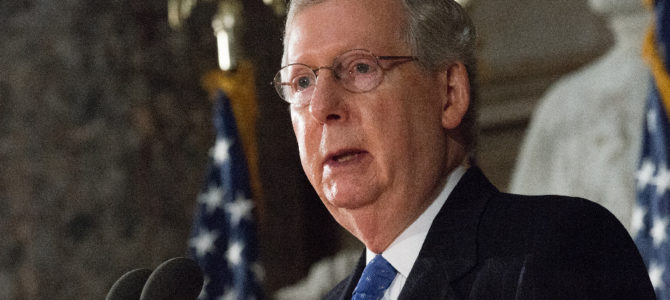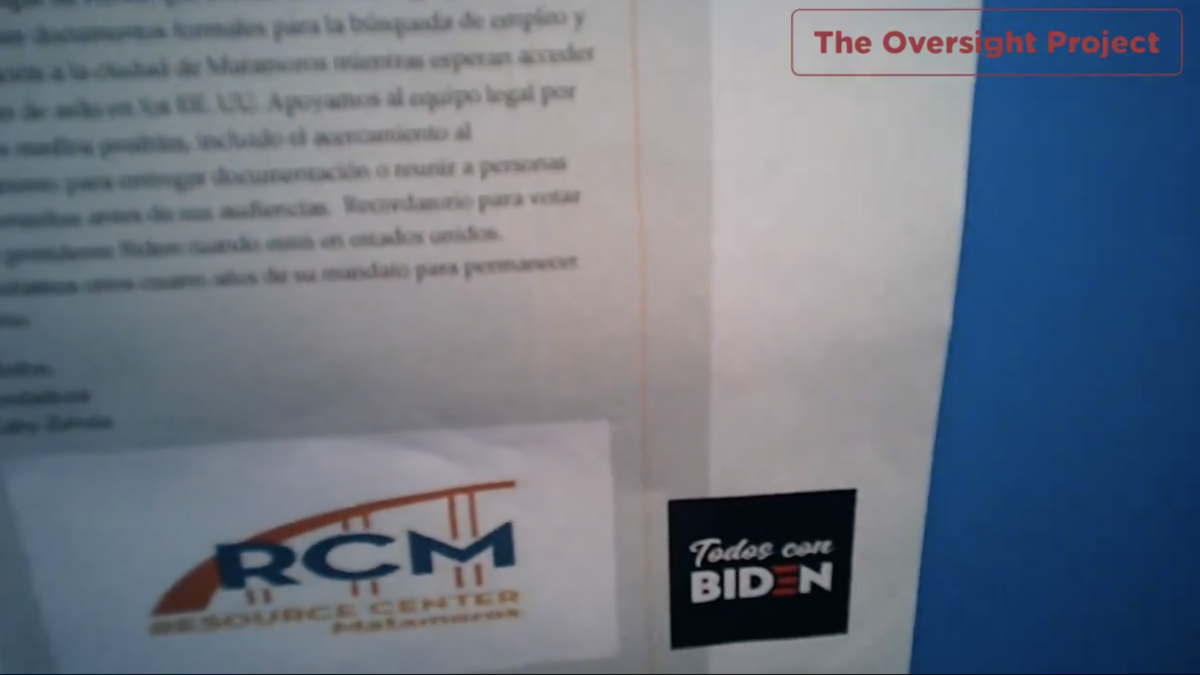
Healthy institutions require effective leadership. This is evident in the dysfunction surrounding the health-care debate in the Senate today.
Legislative leadership is difficult because legislators are notoriously hard to lead. This makes sense for the Senate, where the majority leader’s job has been described as “herding cats.” Nevertheless, some Senate leaders have been more effective than others.
This suggests legislative leadership is a craft. That is, it can be done well or poorly. Mastering it depends on correctly identifying the challenges and opportunities inherent in the Senate’s environment. It requires acknowledging that a leadership style that works in one environment may not work in another.
This is an important lesson for the Senate’s current leaders. How they practice their craft bears directly on how the Senate makes decisions. And the deterioration in the institution’s decision-making process has been a major driver of its current dysfunction.
Process Matters. Just Look at Obamacare’s Passage
Consider the process by which the Senate first passed Obamacare in 2009. That process, just as much as Obamacare’s underlying policy, has poisoned the health care debate. Republicans have pointed to it as evidence that Democrats were never interested in seriously considering their ideas for health care. Democrats have held up the same process in support of their allegations that Republicans were never interested in a genuine health-care debate and instead used every parliamentary tool at their disposal to obstruct Obamacare.
Yet both accusations can’t be accurate. In reality, it was a highly structured process. It is ironic that the effort to stage this debate exhibited more bipartisan cooperation than is usually remembered. For example, Majority Leader Harry Reid and Minority Leader Mitch McConnell negotiated unanimous consent agreements to structure the legislative process each day. These agreements scheduled votes on majority- and minority-sponsored amendments and often required 60 votes to pass instead of 51. The higher vote threshold ensured that any amendments that substantially altered Obamacare or otherwise jeopardized its passage would fail. In sum, the floor process was designed to facilitate the bill’s passage while making it easier for all of the Republicans to vote no.
Reflecting this is the fact that the Democrats did not shut down the amendment process for weeks. And the Republican obstruction associated with Obamacare did not occur until Reid finally secured the 60 votes to end debate and proceed to a final vote. Only then did Republicans pivot from cooperation to obstruction.
Republican ambivalence towards Obamacare’s basic framework has resurfaced after seven years of zero-sum conflict over the measure. The GOP’s current struggle to repeal the law suggests that the process by which the Senate originally considered it was critical to creating that conflict. Had the Senate chosen a real debate instead of a staged one, it likely could have produced a health-care law that enjoyed broad bipartisan support.
This isn’t to suggest that such legislation would have made good policy. Far from it. Rather, the policy outcome would have been more stable over the long term. Only in that sense would the bill have been better than Obamacare.
We’re Having the Same Process Problems Again
Unfortunately, the Senate appears set to repeat a flawed process. The decision of the Republican majority to write its Obamacare alternative in secret suggests that its leaders haven’t learned from these mistakes and updated their management style accordingly. Moreover, changes in the Senate’s environment make it more difficult to pass a bill with such a leadership-driven process. Given this, the Senate’s leaders would do well to learn from experience and consider how previous leaders altered their leadership approach in response to changes in the institution’s environment.
Take Lyndon Johnson. For many, Johnson epitomized a skilled practitioner of the leader’s craft. He is the “Master of the Senate.” Before Johnson, Senate leaders had little real power. Indeed, his tenure marked a fundamental shift in the role leaders played in the legislative process. As majority leader, he behaved as if the Senate’s most important role was to pass legislation, and viewed its antiquated rules and procedures as hindering its ability to do so.
Like leaders today, Johnson wanted speeches to fill floor time instead of genuine deliberation while he worked out the details of legislation and resolved any controversies surrounding it off the floor and out of public view. Doing so made the Senate, its committees, and the floor operate faster, more efficiently, and as an arm of the party leadership more than at any prior point in the institution’s history.
Less appreciated is that his success depended on a unique institutional environment. When he first became leader in 1955, the Senate was dominated by its standing committees and their powerful chairmen. Johnson made the majority leader a powerful force inside the Senate by tapping into these centers of power. In the process, he effectively extended his control over their existing powers. While the committees still provided the structure through which power to affect policy outcomes flowed, that power increasingly flowed through one centralized point prior to reaching the Senate floor: Lyndon Johnson.
Thus Johnson mastered a Senate that was bounded in time. That is, Johnson’s practice of the leader’s craft was well-suited for the Senate as it existed mid-century. It depended on a set of unwritten norms that defined how senators should behave and reinforced committees’ institutional power. These norms discouraged individual members from circumventing the committees and asserting their power on the floor. Not having to worry about the floor left Johnson free to resolve issues behind closed doors in negotiations with interested members.
New Times, New Strategies
Johnson would be remembered very differently had he remained in the Senate instead of leaving to be John F. Kennedy’s vice president. The Senate he mastered was different than the one that existed in the 1960s. Its new environment differed in ways that made it hard, if not impossible, to manage the institution in the same way.
Underlying this change were several factors that made it easier for individual members to pursue their goals on the Senate floor. Changes in the congressional agenda, workload, partisanship levels, and the broader electoral and political environment combined to precipitate a significant transformation in the Senate’s internal functioning. This transformation undermined the centrality of the committees in the institution’s decision-making process.
Mike Mansfield succeeded Johnson as majority leader amid this upheaval. Mansfield had served as Johnson’s majority whip for four years and was familiar with his leadership style. Yet it was inevitable that Mansfield’s approach would differ due to differences in temperament. But temperament alone does not fully explain Mansfield’s success.
He had the humility to recognize that he could not control the Senate in the same way that Johnson had mastered it, and that trying to do so could be counterproductive. Rather than attempting to control policy outcomes on the front end by negotiating agreements behind closed doors, Mansfield instead worked to facilitate the participation of interested members in the legislative process on the Senate floor and resolving on the back end any problems that arose. His goal in doing so was to reduce the unpredictability and inefficiency that otherwise would have resulted from more members debating and offering amendments on the floor.
A new approach to leadership was needed because Mansfield became majority leader on the cusp of the Senate’s emergence as a more participatory institution. In an environment in which individual members increasingly circumvented the committees and exercised their procedural prerogatives on the floor to advance their goals, Mansfield had to be more accommodating of their demands. This was because his influence depended on the support of his members more broadly, not on the restrictive institutional culture of the Senate and its set of unwritten norms that restrained member behavior in the 1950s.
The Times Are A-Changin’ Again
As reflected in the current health-care debate, similar changes are underway in the Senate’s environment today. But today’s leaders have chosen to follow in Johnson’s footsteps instead of Mansfield’s in trying to manage the Senate to limit conflict in the legislative process and control outcomes. As a result, major decisions are made off the floor, out of public view, and under the direction of the party leadership. Yet they are leading an institution that bears more resemblance to the Senate of the 1960s than of the 1950s. As such, their leadership style will struggle to accommodate the demands of members in both parties to debate and amend legislation dealing with controversial issues on the floor.
Managing the Senate in this way is getting more difficult. Polarization has encouraged such an approach. Its incentives push leaders to reach agreement among their members at the lowest common denominator when developing legislation and keep parliamentary strategy off the floor in closed-door discussions. Once broad agreement is reached, leaders can then turn to pressuring any holdouts to get on board with the party position or risk defeat. Once their party is unified, leaders can then turn to pressuring any minority senators needed to invoke cloture and end a filibuster.
But the cohesion on which such a strategy depends shows signs of breaking down. Today, both parties are pulled in opposite directions as their liberal or conservative wings struggle with more moderate members over the direction of the party. Such intraparty divisions make it more difficult to pursue a lowest common denominator approach.
In some cases, there may not even be a common denominator among the members. In such situations, an unwillingness to pursue a Mansfield-esqe approach of letting go will lead to gridlock and inaction as the majority party is unable to resolve its internal disputes yet is also unwilling to advance the legislative process without such agreement.
The Senate’s leadership should learn from this history. Instead of going to ever-greater lengths to control outcomes and limit conflict over controversial legislation in the institution, they should follow Mansfield’s lead and let go of the process, focusing instead on making it as easy as possible for individual members to offer amendments and debate legislation on the Senate floor.
Curing the Senate of its present ills requires skilled practitioners of legislative leadership. Leadership should recognize the challenges and opportunities presented by its current environment. With such leaders at the helm, the Senate can have a real debate for a change.







